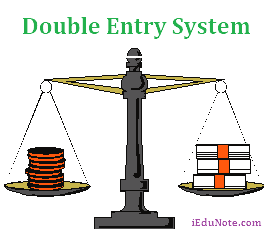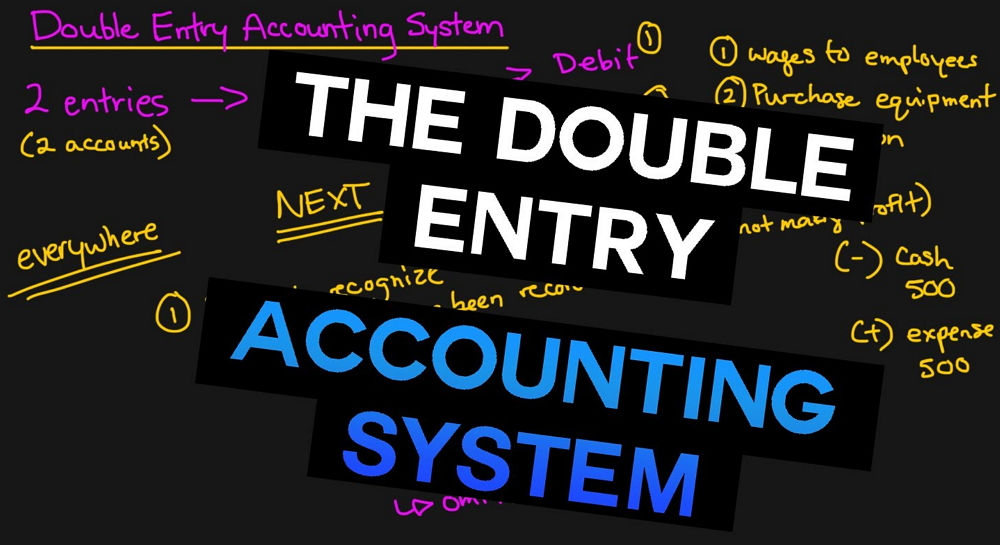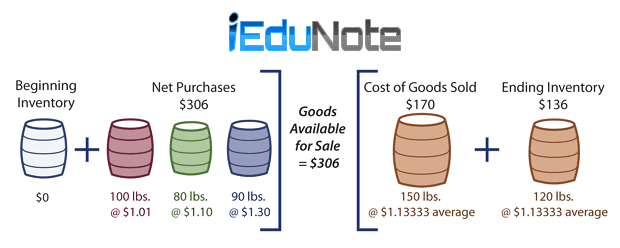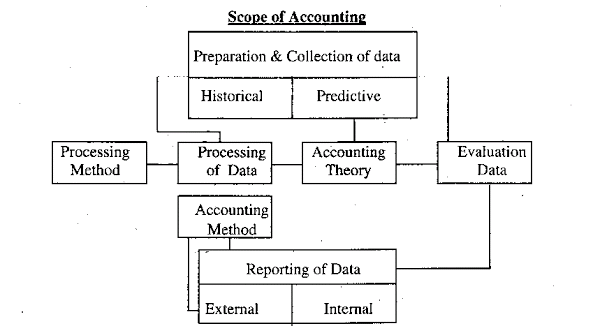
In the Double Entry System, transactions have a dual aspect, and every transaction involves two parties – debit and credit, where and they are equal.
Double Entry system seeks to record every transaction in money or money’s worth in its double aspect – the receipt of a benefit by one account and the surrender of similar benefit by another account, the former entry being to the debit of the account receiving the later to the credit of the account surrendering.
What is Double-Entry System?
The most scientific and reliable method of accounting is the Double Entry System. One must have a clear conception of the nature of the transaction to understand the double-entry system.
Every transaction involves two parties or accounts – one account gives the benefit, and the other receives it.
It is called a dual entity of transaction.
In every transaction, the account receiving a benefit is debited, and the account giving benefit is credited.
The process of keeping account accepting this dual entity i.e., debiting one account for a definite amount of money and crediting the other account for the same amount, is called a double-entry system.
Every transaction affects the accounting equation of a business. Dual change may take place between two assets.
For example, machinery purchase in cash.
Here machinery account receives the benefit, and the cash account gives the benefit, or the amount of decrease in cash will give an increase of machinery for the same amount.
Again this change may take place between two liabilities.
For example, to meet up the claim of a creditor taking a long-term loan.
Here long-term liability is credited abolishing the short term liability of creditor. Besides, this change may take place between assets and liabilities.
For example, furniture purchased on credit.
Here asset is debited for a particular amount, and at the same time, an equal amount of liability is also credited.
Since every transaction brings changes in assets for an equal sum of money or asset and liability or liabilities, the transactions are to be recorded according to a double-entry system to know the accurate position of assets and liabilities of a business concern.
If accounts are maintained under a double-entry system, two accounts are affected.
One is debited, and another is credited. This is the main principle of the double-entry system.
To make the matter clear some examples are given below;
Mr. Angel invested cash $20,000 in his business as capital. This transaction involves two accounts – Cash Account and Capital Account – Angel. For this transaction, asset-cash increases for $20,000 on one side, and the other side, liability increases for $20,000 as capital, which is the claim of the owner.
This transaction is to be recorded debiting cash and crediting capital accounts. If the transactions are not recorded in two accounts, proper results are not reflected.
Furniture purchased for $2,000. This transaction involves two accounts – a furniture account and a cash account.
For this transaction, cash decreases for $2,000, and furniture increases by $2,000. Here, the furniture account is debited, and the cash account is credited for $2,000 cash.
In another way, the transaction changes only. An element of accounting equation i.e., A = L + P.
It is clear from the above discussion that every transaction is to be recorded in two accounts – one is debited, and the other is credited.
The main principle of the double-entry system is that for every debit there is a corresponding credit for an equal amount of money and for every credit there is a corresponding debit for an equal amount of money; i.e., for every transaction one account is debited for the amount of transaction and the other account is credited for the equal amount of money.

Therefore, it can be said that the system under which every transaction is accounted in two accounts for the equal amount of money debiting one and crediting the other ignoring no account is called a double-entry system.
Every debit must have a corresponding credit and Vice – Versa. Double-entry Book-Keeping is a system by which every debit entry is balanced by an equal credit entry.
Characteristics or Fundamental Principles of Double Entry System
The double-entry system is a scientific, self-sufficient, and reliable system of accounting. Following some widely accepted characteristics or principles, the account is kept under this system.
As a result, on one side, the arithmetical accuracy of the transaction is ensured, and on the other side, ascertainment of the financial position of the business is easily possible.
Characteristics of the double-entry system are stated below;
- Two parties: Every transaction involves two parties – debit and credit. According to the main principles of this system, every debit of some amount creates corresponding credit, or every credit creates the corresponding debit for the same amount.
- Giver and receiver: Every transaction must have one giver and one receiver.
- Exchange of equal amount: The amount of money of a transaction the party gives is equal to the amount the party receives.
- Separate entity: Under this system, business is treated as a separate entity from the owner. Here the business is considered as a separate entity.
- Dual aspects: Every transaction is divided into two aspects. The left side of the transaction debit and the right side is credit.
- Results: Under double entry system totality of debit is equal to the totality of credit. In its ascertainment of the result is easy.
- Complete accounting system: Double entry system is a scientific and complete accounting system.
Through this system, the account is kept completely, and no party is ignored. In fine, it can be said that every transaction must possess these characteristics.
If there is an exception to this, complete information will not be available in the books of accounting. As a result, the main objective of accounting will be frustrated.
The process of keeping accounts under the double-entry system;
- Journal: At first, transactions are recorded in the primary book of accounting called a journal.
- Ledger: In the second phase, transactions are classified and recorded permanently in the ledger in brief.
- Trial balance: In the third phase, the arithmetical accuracy of the account is verified through the preparation of the trial balance.
- Financial statements: In the fourth or final stage through financial statements, the results of all the financial activities of a year are determined.
Advantages of Double Entry System
The double-entry system is the most scientific method of keeping accounts. In the modem age, this system is accepted as the best one.
In every organization, whether big or small accounts are kept under the double-entry system.
The advantages of the double-entry system are stated in brief;
Complete accounts of transactions
The double-entry system can keep complete accounts of transactions as it is based on dual aspects of each transaction, i.e., debit and credit, are recorded simultaneously.
For this reason, this system maintains accounts of all parties relating to transactions.
Verification of arithmetical accuracy
Arithmetical accuracy of accounting can be verified through the preparation of trial balance if the accounts are maintained under the double-entry system.
Under this system, every debit for a certain amount of money will have corresponding credit for an equal amount.
For this reason, the total amount of debt will be equal to the total amount of credit. It can be detected through trial balance whether two sides of accounts are equal or not, and thereby the arithmetical accuracy of the account is verified.
Determining profit or loss
Under the double-entry system, profit or loss of the company for a particular accounting period can be known by preparing an income statement.
Since all accounts relating to income and expenditure are maintained properly in the ledger under the double-entry system, it becomes convenient to draw income statement at the end of a particular accounting period.
Determining the financial position
Under the double-entry system, the total assets and liabilities of a business concern are recorded properly.
As a result, on the closing day of the accounting period balance sheet is prepared with the help of all assets and liabilities. Through this balance sheet financial position of the business concerned can be ascertained.
Knowing assets and liabilities
The total amount of assets and liabilities can be ascertained if the account is kept under a double-entry system, and it becomes easier to settle liability and assets.
Fixation of the price of commodities
It becomes easier to fix-up the price of commodities as the accounts are maintained systematically under the double-entry system.
Submission of income and VAT statements
The double-entry system being the reliable system of keeping accounts the submission of reliable income and VAT statement under it is possible based on which income tax and VAT are fixed and paid.
Comparative analysis
Under this system of accounting, the future course of action can be formulated by comparing income -expenditure, asset, and liability of the current year with that of the previous year.
Increase in profit
Under this system of accounting, the picture of all incomes or profits is reflected.
It can be identified which item is more profitable for a business comparing the items relating to a profit of the current year with that of the previous year.
In this way, attempts can be made to make more profit.
Expenditure control
Through comparative analysis, expenditure may be controlled by curtailing expensive expenditure.
Detection and prevention of forgery
Under this system of accounts, errors, or forgery of accounts can easily be detected. As a result, the moral qualities of an accountant and other employees are upheld.
Supply of information
This system helps run the business properly, supplying necessary information and statistics to the management.
Future reference
Under this system, as every transaction is permanently recorded properly and completely, any necessary information can be detected easily in the future.
Easy application
It is easier to record the transactions properly in the books of accounts following the scientific method of the double-entry system.
Generally accepted method
The double-entry system is a scientific method, is a generally accepted system. The accounts under the double-entry system become reliable and acceptable to all concerned, like income tax authority, creditors, etc.
Efficiency evaluation of business concern
Capacity for earning a profit and repaying liabilities can be evaluated with the help of various ratios relating to accounts from financial statements.
For example, creditors or loan givers evaluate the loan repaying capacity of a business concern with the help of the current ratio. If the ratio is 2:1, then it is assumed that the loan repaying capacity of the business concern is sound enough.
Timely step for correcting accounting errors
Accounting errors can properly be detected, and taking necessary measures for correction is possible under a double-entry system of accounting; i.e., before going to the next stage, the errors of accounting can be corrected.
Utility
The utility and application of this system in the accounts of all business concerns, whether big, medium or small, are accepted by all.
Disadvantages or Limitations of Double Entry System
The double entry system is a generally accepted scientific method. Despite its many important advantages, some limitations of it exist which are stated below:
Increased size of books of accounts
Under the double-entry system, every transaction is recorded on two sides of two accounts and in two steps (Journal & ledger) of books of accounts.
Complexity in the accounting process
Complexity arises in following rules, principles, techniques, and methods, etc. for keeping accounts under the double-entry system.
Expensive, time and labor-consuming
Since the accounting process under the double-entry system is extensive, a good number of books are to be kept, and a large number of employees are employed for accounting work.
As a result, it requires enough labor, time, and money. Therefore, it becomes impossible to follow this system by small business concerns.
Persons of specialized knowledge required.
The accountant should possess both theoretical and practical knowledge of accounting for the proper keeping of accounts under the double-entry system.
An inexperienced person in accounting fails and faces problems in maintaining accounts under this double-entry system.
Possibility of mistake
As the accounting process under the double-entry system is complex and complicated, the possibility of errors and mistakes cannot be avoided completely.
The limited scope of application
In a small business organization, daily shopping, a cultural ceremony, the application of a single entry system of accounting is more popular and advantageous than the double-entry system.
A problem in maintaining the secrecy
A lot of people are engaged in maintaining accounts under the double-entry system since the accounting process is very wide and extensive.
As a result, a problem arises in maintaining the secrecy of the accounts or business.
Though there arise some problems in maintaining accounts under double entry systems, its advantages and acceptability are so wide and comprehensive that at present age in almost all field accounts is kept under this system.

